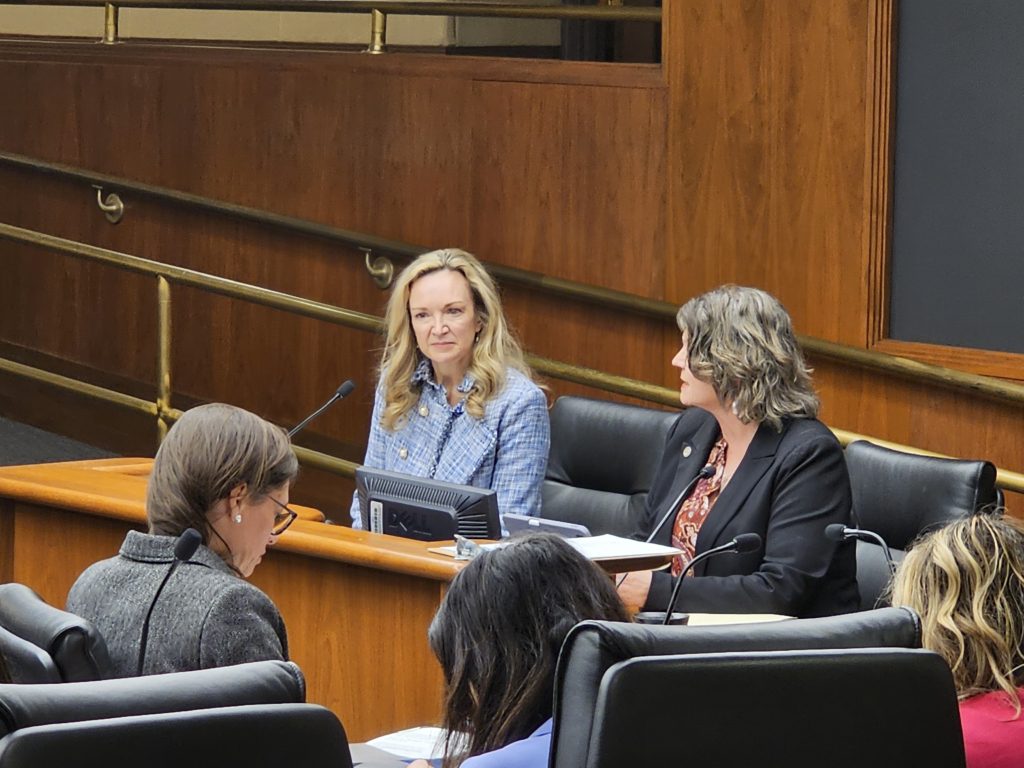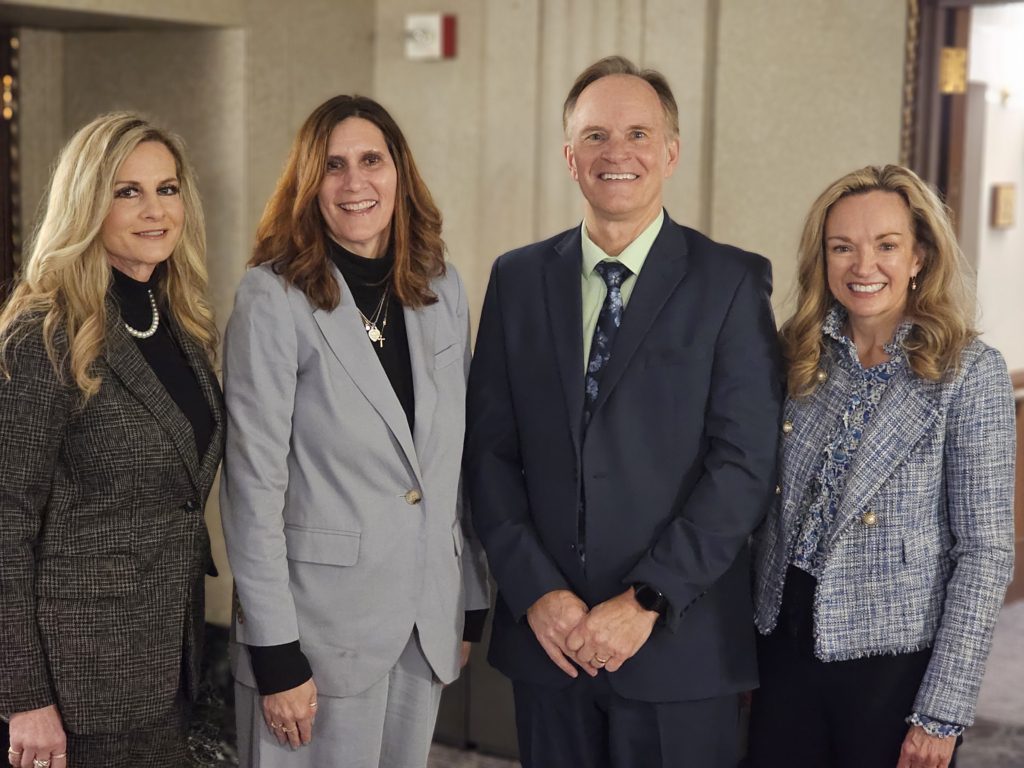

Angela Jerabek, Executive Director, Dawn Lueck, director of Stillwater Area Schools, and Malinda Major, principal of Brookview Elementary School in Stillwater went in front of the Minnesota House of Representatives Education Finance Committee on February 29, 2024.
The ask and bill being proposed and sponsored by Rep. Cheryl Youakim (DFL-Hopkins), HF3378 would appropriate $10 million to fund 36 new BARR schools in fiscal year 2025. Last year, 50 Minnesota schools applied for BARR funding.

Included in the Photo: Malinda Major, Principal, Brookview Elementary School, Dawn Lueck, Director of Stillwater Area Schools, Rob Metz, Deputy Director, BARR Center and Angela Jerabek, Executive Director, BARR Center
House of Representatives Summary of the story:
Legislators seek to double funding, number of schools served in BARR education program
By Brian Basham
When school administrators see a successful education model, they want to continue, expand, and share that program.
Minnesota aims to do that with BARR — Building Assets, Reducing Risks.
Dawn Lueck, director of Stillwater Area Schools, said BARR has been instrumental to improving culture and supporting students academically, socially and emotionally.
“Our BARR schools are seeing better test scores, better attendance, better behavior and better teacher engagement,” she told the House Education Finance Committee Thursday.
The Legislature approved $5 million in 2023 to fund 18 new BARR schools in Minnesota. This year, they want to double both numbers.
Sponsored by Rep. Cheryl Youakim (DFL-Hopkins), HF3378 would appropriate $10 million to fund 36 new BARR schools in fiscal year 2025. Last year, 50 Minnesota schools applied for BARR funding.
BARR is a teaching model that empowers students, teachers, and families with data, so schools can realign existing resources to give students more personalized support, both inside and outside of the classroom.
Funding would provide schools with coaching support, professional development, curriculum and resources, and access to the national network of BARR educators over three years.
“The BARR system is recognized as a highly successful way to improve student achievement in a school environment for both educators and students,” Youakim said. “This program is not just a program. It is an investment in our students that will improve how we deliver education.”
According to Lueck, Stillwater Area High School saw a decline in ninth-grade failure rates from 14% to 6.5% in its first year of implementation, and Minnesota Comprehensive Assessment scores at Lake Elmo Elementary School in both math and reading for grades 3-5 increased by eight percentile points.
Malinda Major, principal of Brookview Elementary School in Stillwater, said after implementing BARR this school year, she is seeing immediate results.
“Attendance has increased by 10% this year. There has been an 8% reduction in behavior referrals. Students and staff are smiling more. BARR has created a positive and empowering culture at our school, and we are just getting started.”
Rep. Ben Bakeberg (R-Jordan) suggested proposed funding could be spread out to cover more school districts and give each district a portion of those funds.
“We talked about $5 million last year was allocated to BARR. … But it’s $5 million less that we had available to flexibly fund our schools,” he said.
If that $5 million is divided among all the school districts in Minnesota, each district would receive $15,000, Bakeberg said.
“That may not seem like a lot, but that’s money, and our districts are scrambling for dollars right now,” he said. “Every choice that we make at this table that does not give money directly to schools … it’s tying their hands.”
Posted on: https://www.house.mn.gov/sessiondaily/Story/18112